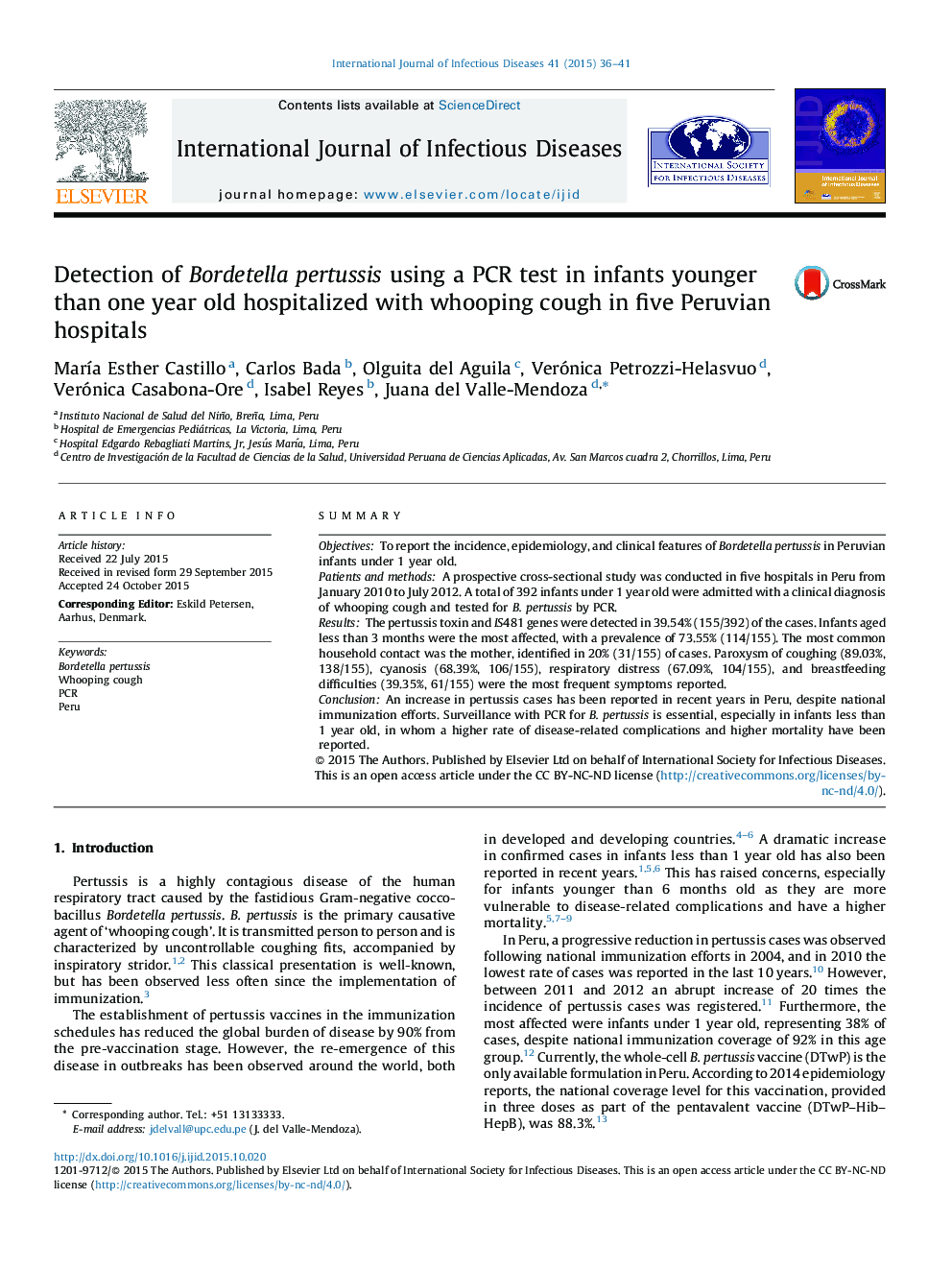| Article ID | Journal | Published Year | Pages | File Type |
|---|---|---|---|---|
| 3361933 | International Journal of Infectious Diseases | 2015 | 6 Pages |
•We performed PCR testing for Bordetella pertussis in 392 infants under 1 year old diagnosed with whooping cough.•PCR is a sensitive and specific technique for the diagnosis of B. pertussis.•Children under 3 months of age are the most vulnerable population for B. pertussis infections and related complications.•Adults are identified as the most frequent household contact for B. pertussis.
SummaryObjectivesTo report the incidence, epidemiology, and clinical features of Bordetella pertussis in Peruvian infants under 1 year old.Patients and methodsA prospective cross-sectional study was conducted in five hospitals in Peru from January 2010 to July 2012. A total of 392 infants under 1 year old were admitted with a clinical diagnosis of whooping cough and tested for B. pertussis by PCR.ResultsThe pertussis toxin and IS481 genes were detected in 39.54% (155/392) of the cases. Infants aged less than 3 months were the most affected, with a prevalence of 73.55% (114/155). The most common household contact was the mother, identified in 20% (31/155) of cases. Paroxysm of coughing (89.03%, 138/155), cyanosis (68.39%, 106/155), respiratory distress (67.09%, 104/155), and breastfeeding difficulties (39.35%, 61/155) were the most frequent symptoms reported.ConclusionAn increase in pertussis cases has been reported in recent years in Peru, despite national immunization efforts. Surveillance with PCR for B. pertussis is essential, especially in infants less than 1 year old, in whom a higher rate of disease-related complications and higher mortality have been reported.
